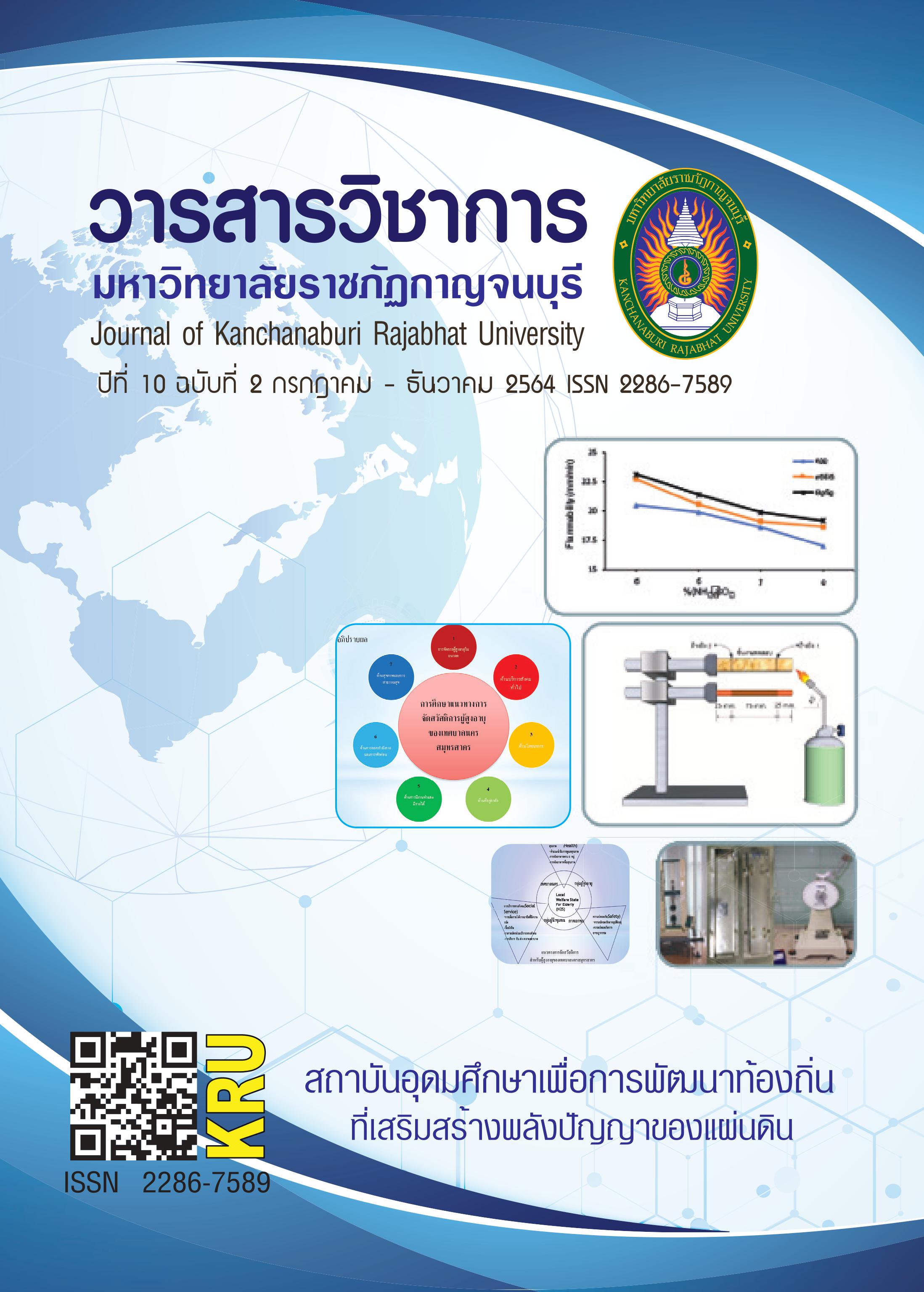INNOVATION ON DIGITAL MARKETING TO INCREASE INCOME OF MAE SA’S WOMEN GROUP, MAE RIM DISTRICT, CHIANG MAI PROVINCE
Main Article Content
Abstract
The objectives of this research were to explore the need for digital marketing models, to develop a digital marketing system, to study the adoption process and assess the state of the adoption of digital marketing innovations, and to analyze patterns and ways to make money through online marketing. This research collected data from 30 leaders of a group of housewives. The tools used in the research consisted of participant observation, questionnaires and group discussion. A content analysis was applied to the data obtained in each activity by means of classifying, categorizing, correlating and linking to the conclusion. The results showed that the women group wanted to create a Facebook Page as an online marketing model and a community product distribution channel. The group developed an online marketing system using the conceptual framework of "post, invite, share." Furthermore, a message that represented the community was used on the products. The hashtag symbol “#” was used in front of the message to create product tracking and recognition. Lastly, the group developed the product brand using storytelling techniques to tell the history of each product, to create a connection point between the brand and customers, and to tell the benefits that customers would receive from the brand. The results from online marketing experiments found that the women group conducted 5 steps of the innovation adoption: process, awareness, interest, evaluation, trial, and adoption, but the decision to adopt was not yet confirmed. The evaluation of the innovation adoption revealed that trail ability, observability and complexity were at the highest level, that relative advantage was at a high level, and that compatibility was at a medium level. An important guideline for using the digital marketing innovation, the Facebook page, to increase the income of Mae Sa’ s Women group in Mae Rim district, Chiang Mai province, involved improving the members’ digital innovation skills and seeking consultation from experts.
Article Details
References
กันต์ อินทุวงค์. (2558). การถ่ายทอดเทคโนโลยีเพื่อการยอมรับนวัตกรรม. วารสารวิชาการราชภัฏอุตรดิตถ์,
(2), 1-10.
กาญนา แก้วเทพ นันทกา สุธรรมประเสริฐ และเอกธิดา เสริมทอง. (2554). ผู้คนที่หลากหลายในการสื่อสาร:
เด็กสตรี และผู้สูงวัย. กรุงเทพฯ: ภาพพิมพ์.
ณภัทร ญาโณภาส. (2561). นวัตกรรมการท่องเที่ยวยุคดิจิทัล. วารสารวิชาการ มหาวิทยาลัยราชภัฏกาญจนบุรี,
(2), 148-157.
ณงลักษณ์ จารุวัฒน์ และ ประภัสสร วรรณสถิต. (2551). DigiMarketing เปิดโลกนิวมีเดียและการตลาดดิจิทัล.
แปลจาก DigiMarketing. กรุงเทพฯ: เนชั่นบุ๊คส์.
ไพศาล กาญจนวงศ์ และ อรจนา จันทรประยูร. (2558). การประยุกต์ใช้งานเว็บบล็อกเพื่อส่งเสริมการตลาด
อิเล็กทรอนิกส์การท่องเที่ยว กรณีศึกษาธุรกิจท่องเที่ยวขนาดเล็กในจังหวัดเชียงใหม่. วารสารวิชาการ มหาวิทยาลัยราชภัฏกาญจนบุรี, 4(1), 4-15.
สุภพงษ์ สุขชาวนา และกาญจนา มีศิลปะวิกภัย. (2560). ส่วนประสมทางการตลาดและการสื่อสารการตลาดที่มีผล
ต่อการตัดสินใจใช้บริการธุรกิจถ่ายภาพของประชาชนภูมิภาคตะวันตกในประเทศไทย. วารสารวิชาการ
มหาวิทยาลัยราชภัฏกาญจนบุรี, 6(2), 71-77.
สำนักงานพัฒนาธุรกรรมทางอิเล็กทรอนิกส์ (องค์การมหาชน). (2561). เปิดพฤติกรรมผู้ใช้อินเทอร์เน็ตปี 61
คนไทยใช้เน็ตเพิ่ม 10 ชั่วโมง 5 นาทีต่อวัน. ค้นเมื่อ พฤศจิกายน 15, 2561, จาก https://www.etda.or.th/content/etda-reveals-thailand-internet-user-profile-2018.html
เสาวนีย์ วิจิตรโกสุม อุ่นเรือน เล็กน้อย. (2560). การถ่ายทอดเทคโนโลยีและนวัตกรรมงานวิจัยสู่การนำไปใช้ในพื้นที่.
วารสารสิ่งแวดล้อม, 21(3), 19-28.
Everett M. Rogers & F. Floyd Shoemaker. (1971). Communication of Innovations; A Cross-
Cultural Approach. New York: The Free Press.
Mark Bauerlein. (2011). The Digital Divide. United States of America: Penguin Group.


